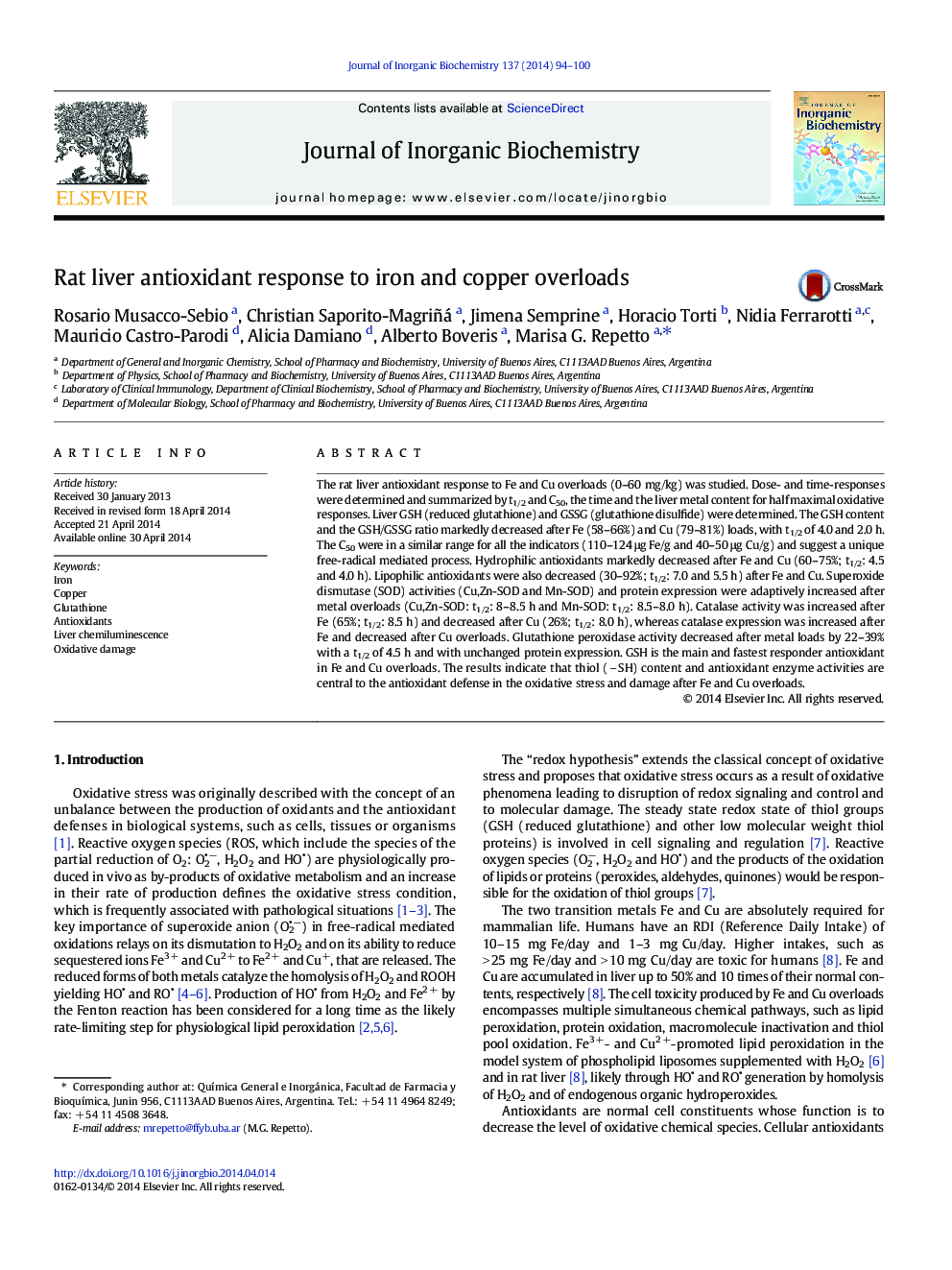| کد مقاله | کد نشریه | سال انتشار | مقاله انگلیسی | نسخه تمام متن |
|---|---|---|---|---|
| 1316714 | 1499450 | 2014 | 7 صفحه PDF | دانلود رایگان |
The rat liver antioxidant response to Fe and Cu overloads (0–60 mg/kg) was studied. Dose- and time-responses were determined and summarized by t1/2 and C50, the time and the liver metal content for half maximal oxidative responses. Liver GSH (reduced glutathione) and GSSG (glutathione disulfide) were determined. The GSH content and the GSH/GSSG ratio markedly decreased after Fe (58–66%) and Cu (79–81%) loads, with t1/2 of 4.0 and 2.0 h. The C50 were in a similar range for all the indicators (110–124 μg Fe/g and 40–50 μg Cu/g) and suggest a unique free-radical mediated process. Hydrophilic antioxidants markedly decreased after Fe and Cu (60–75%; t1/2: 4.5 and 4.0 h). Lipophilic antioxidants were also decreased (30–92%; t1/2: 7.0 and 5.5 h) after Fe and Cu. Superoxide dismutase (SOD) activities (Cu,Zn-SOD and Mn-SOD) and protein expression were adaptively increased after metal overloads (Cu,Zn-SOD: t1/2: 8–8.5 h and Mn-SOD: t1/2: 8.5–8.0 h). Catalase activity was increased after Fe (65%; t1/2: 8.5 h) and decreased after Cu (26%; t1/2: 8.0 h), whereas catalase expression was increased after Fe and decreased after Cu overloads. Glutathione peroxidase activity decreased after metal loads by 22–39% with a t1/2 of 4.5 h and with unchanged protein expression. GSH is the main and fastest responder antioxidant in Fe and Cu overloads. The results indicate that thiol (SH) content and antioxidant enzyme activities are central to the antioxidant defense in the oxidative stress and damage after Fe and Cu overloads.
The antioxidant protection in liver is highly affected after Fe and Cu acute overloads. GSH is the main and fastest-responder antioxidant. An adaptive response of increased expression and activity of SOD1, SOD2 and catalase follows to Fe and Cu overloads. Increased cytosolic levels of Fe2 + and Cu+ and of H2O2 are central to the hypothesis that Fe and Cu toxicities are mediated by increased rates of HO and RO formation.Figure optionsDownload as PowerPoint slide
Journal: Journal of Inorganic Biochemistry - Volume 137, August 2014, Pages 94–100
